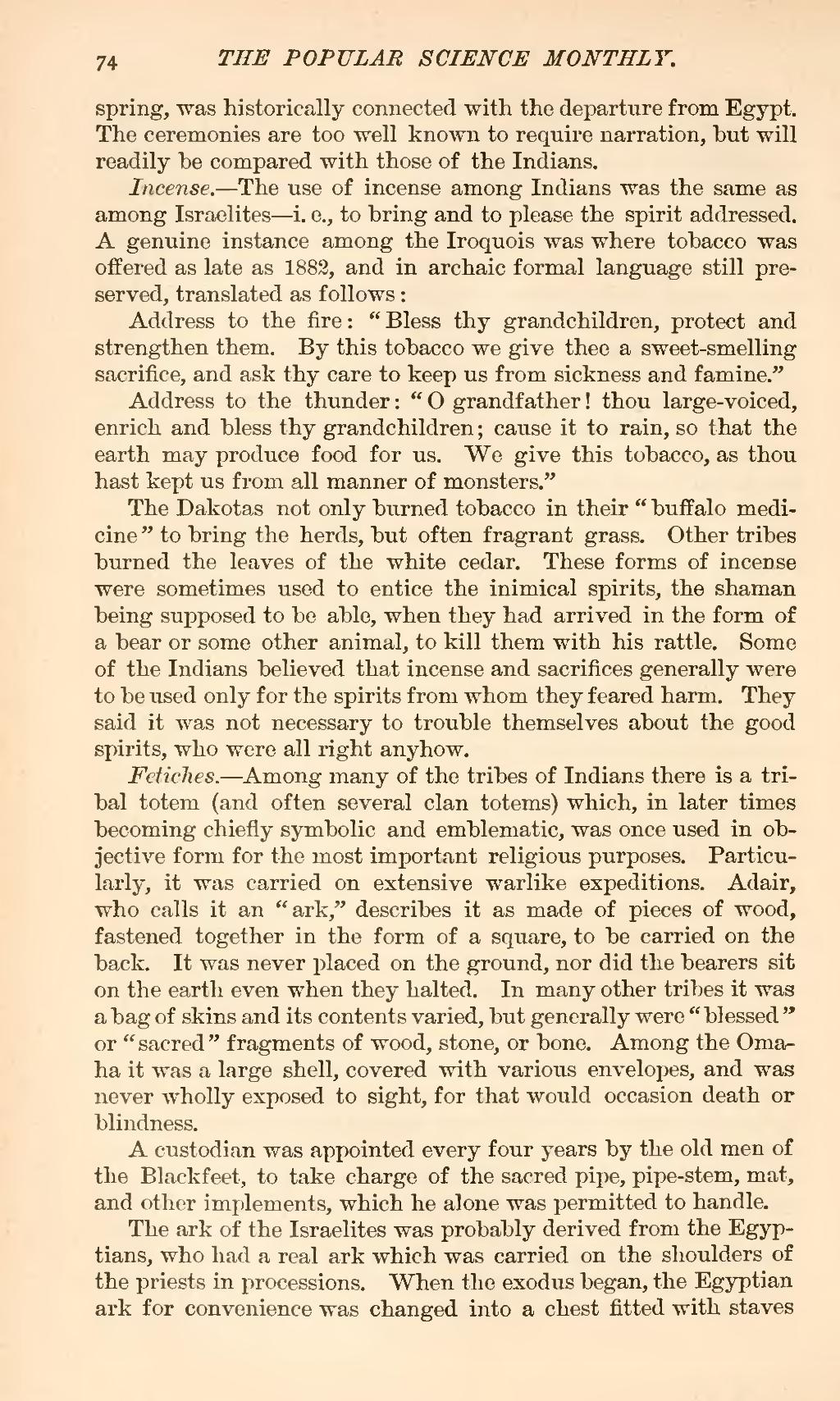spring, was historically connected with the departure from Egypt. The ceremonies are too well known to require narration, but will readily be compared with those of the Indians.
Incense.—The use of incense among Indians was the same as among Israelites—i.e., to bring and to please the spirit addressed. A genuine instance among the Iroquois was where tobacco was offered as late as 1882, and in archaic formal language still preserved, translated as follows:
Address to the fire: "Bless thy grandchildren, protect and strengthen them. By this tobacco we give thee a sweet-smelling sacrifice, and ask thy care to keep us from sickness and famine."
Address to the thunder: "O grandfather! thou large-voiced, enrich and bless thy grandchildren; cause it to rain, so that the earth may produce food for us. We give this tobacco, as thou hast kept us from all manner of monsters."
The Dakotas not only burned tobacco in their "buffalo medicine" to bring the herds, but often fragrant grass. Other tribes burned the leaves of the white cedar. These forms of incense were sometimes used to entice the inimical spirits, the shaman being supposed to be able, when they had arrived in the form of a bear or some other animal, to kill them with his rattle. Some of the Indians believed that incense and sacrifices generally were to be used only for the spirits from whom they feared harm. They said it was not necessary to trouble themselves about the good spirits, who were all right anyhow.
Fetiches.—Among many of the tribes of Indians there is a tribal totem (and often several clan totems) which, in later times becoming chiefly symbolic and emblematic, was once used in objective form for the most important religious purposes. Particularly, it was carried on extensive warlike expeditions. Adair, who calls it an "ark," describes it as made of pieces of wood, fastened together in the form of a square, to be carried on the back. It was never placed on the ground, nor did the bearers sit on the earth even when they halted. In many other tribes it was a bag of skins and its contents varied, but generally were "blessed" or "sacred" fragments of wood, stone, or bone. Among the Omaha it was a large shell, covered with various envelopes, and was never wholly exposed to sight, for that would occasion death or blindness.
A custodian was appointed every four years by the old men of the Blackfeet, to take charge of the sacred pipe, pipe-stem, mat, and other implements, which he alone was permitted to handle.
The ark of the Israelites was probably derived from the Egyptians, who had a real ark which was carried on the shoulders of the priests in processions. When the exodus began, the Egyptian ark for convenience was changed into a chest fitted with staves
